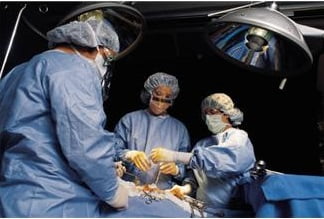Breast implant surgery can pose a great number of risks. Anyone considering undergoing one should be informed about all the possible undesired outcomes. It is your body, after all. Your health and wellness should come first. There are major concerns about the dangers of breast implants that have to be weighed before you make a decision. Some of them are short-term and some are long-term.
We will take a closer look at just some of the many dangers related to breast implant surgery. The main points we will look at are implant complications, further surgeries, implant removal, and breastfeeding. Ultimately, these points are the most common in relation to the dangers of breast implants.
1. Implant complications
There is a long list of complications connected to implants. These complications include the following:
- Asymmetry: A condition whereby the breasts differ in shape, in terms of size, contour or breast level.
- Breast Pain: The person experiences pain in the breast and nipple area.
- Breast Tissue Atrophy: The breast skin tends to shrink and thin.
- Calcification: Hard lumps form beneath the skin in the implant region. During routine check-up including mammography these calcifications may be confused for cancer, leading to additional, unnecessary surgery.
- Capsular Contracture: This involves contraction of the tissue capsule surrounding an
 implant. If it becomes chronic, it can lead to inflexibility of the breast. Also this can constrict the implant. There are usually four capsular contracture grades called Baker grades. These are Grade I, II, III, and IV. During Grade I, the breast is usually soft and seems natural. In Grade II, the breast is a bit firm and appears normal. In Grade III, the breast is firm and appears abnormal. With Grade IV, the breast is hard, sore, and appears abnormal. Grade III and IV are considered chronic. These may require further surgery. Normally, the surgical process entails removing the implant with or devoid of replacement. There is a chance that capsular contracture may arise again following the operation to correct it.
implant. If it becomes chronic, it can lead to inflexibility of the breast. Also this can constrict the implant. There are usually four capsular contracture grades called Baker grades. These are Grade I, II, III, and IV. During Grade I, the breast is usually soft and seems natural. In Grade II, the breast is a bit firm and appears normal. In Grade III, the breast is firm and appears abnormal. With Grade IV, the breast is hard, sore, and appears abnormal. Grade III and IV are considered chronic. These may require further surgery. Normally, the surgical process entails removing the implant with or devoid of replacement. There is a chance that capsular contracture may arise again following the operation to correct it. - Chest Wall Deformity: Where the underlying rib cage has the appearance of being deformed.
- Deflation: This is a condition where the saline solution flows out from a saline-filled breast implant. It occurs when the solution seeps out through the valve or when the implant ruptures. It can lead to partial or complete breakdown of the implant.
- Delayed Wound Healing: The incision site fails to cure or delays to heal.
- Extrusion: The skin collapses and the implant emerges above the skin.
- Hematoma: Blood tends to collect near the surgical area. It can result in inflammation, bruising, and pain. Hematomas can occur after surgery. However, they may also occur at any time if the breast is damaged. Small hematomas can be absorbed by the body. However, large ones may need medical intervention. For example, the latter may need surgical draining.
- Iatrogenic Damage: Implant surgery can lead to damage of body tissue. Sometimes, it can be the implant itself.
- Infection, such as Toxic Shock Syndrome: This arises once wounds are contaminated. This contamination may be by microorganisms like bacteria or fungi. The implant may have to be removed should an infection fail to respond to antibiotics.
- Inflammation: Inflammation happens due to infection. Inflammation is characterized by redness, swelling, pain, warmth, as well as dysfunction.
- Lymph Edema: Obstruction or blockage of the lymph vessels that drain fluid of the tissue. This results to fluid retention. This eventually leads to swelling of the lymph nodes.
- Displacement: The implant gets displaced in the breast region. This may occur during surgery or after surgery if the implant reallocates from its original position. Factors like gravity, capsular contracture, or trauma can cause this shifting.
- Necrosis: This involves formation of dead skin or tissue in the areas surrounding the breast. There are many possible causes for necrosis. Among these causes are infection, smoking, utilization of steroids in the operated breast area, radiation, and extreme high temperature or cold therapy.
- Changes in Breast Sensitivity: Breast implants can lead to an increase or reduction in breast sensitivity. These changes can be short-term or permanent. It can also have an effect on sexual response.
Other Complications
- Palpability: Being able to feel the implant through the skin.
- Ptosis: Sagging or drooping of the breast – just as it would from aging, breastfeeding or weight loss.
- Redness: The skin changes coloration as a result of bleeding during surgery.
- Rupture: Due to a cut in the lining of the implant wall. The longer a breast implant is worn, the higher the risks of an implant rupture.
- Seroma: Fluids collecting around the implant. It can lead to inflammation, pain and redness. The body can absorb small seromas while large ones may need a surgical drain.
- Skin Rash: There are possibilities of rashes appearing around the implant area.
- Unsatisfactory Size: The patient may not be satisfied with the general appearance of the enlarged breasts due to the size or shape of the implant utilized.
- Visibility: This is when the breast implant can be seen through the skin.
- Rippling: The Lining of the breast implant may be felt or observed through the skin.
With all these potential complications, you might want to evaluate your options. Is the beautification worth it? Is breast enhancement through implants enough of a reason? These are points to seriously consider.
2. Further Surgeries
There is another factor to consider. You must take note that breast implants are temporary. Wearing a breast implant for a long time risks extreme complications. Check with the doctor regularly. Removal of the implants may be necessary (see below).
There are no guarantees that there are going to be pleasing results from extra operations. Also, the kind of surgical procedure carried out during a re-operation varies. You may require having to go through more than one re-operation during your lifespan.
Different Surgical Processes
One or more surgical procedures can be carried out in one re-operation. The different types of surgical processes that may be carried out are as follows:
- Surgery to remove the breast, with or devoid of replacement
- Removing of damaged capsule tissue surrounding the breast implant
- Wound revision, like surgical-removal of surplus scar tissue
- Hematoma drain by putting in a surgical needle or tube via the skin to draw off the collected blood
- Relocation of the implant through surgically opening the cut and shifting the implant
- Biopsy involving insertion of a surgical needle via the skin to get rid of a lump.
These later surgeries range from minor to serious. Consider if any of them are worth the trouble. Getting a breast implant might be more trouble than it is worth.
3. Removal of the implant
Most women with breast implants will have it removed at some point in their life. This can be due to complications. Or they may decide to replace it. However, this can have their own side effects. They may experience cosmetically adverse dimpling, wrinkling, or drooping of their breasts after the procedure. You might want to consider these side-effects before you decide to go under the knife in the first place.
4. Breastfeeding
Some women who have undergone breast implant surgery are not able to breastfeed. For instance, women who have had mastectomies followed by breast implant restoration surgeries are not capable of breastfeeding. This is as a result of breast tissue loss. Also, this may be due to the loss of the glands which produce milk.
Furthermore, studies show that women with breast implants have been found to carry babies with low weight during pregnancy. As a result, they also give birth to low-weight babies. This puts both the mother and child at risk. Are you considering having kids? If you are, you might want to re-evaluate whether breast implants will be right for you. Think about the long-term impact. It might not be worth it to risk such dangers of breast implants.
Are the Risks & Dangers of Breast Implants Worth It?
Anyone uncomfortable with the thought of experiencing any of the ill side-effects described should reconsider breast implant surgery. Do not take them lightly. Ask yourself these questions if you are really willing to go through the difficulties. Do you think these are worth it? Are the price and the risk acceptable? Furthermore, are there alternatives?
Fortunately, you have other choices. You have plenty of natural breast expansion options available. Therefore, there is no need for anyone to put their beauty, health, or life at risk with breast implant surgery. Thus, know the different dangers of breast implants. Finally, consider the available natural and organic options. After all, they might be better!
For more information on how to enhance your breast naturally, you should check out: BreastEnlargement.name
Common Questions
Yes, breast implants carry potential risks and complications, ranging from asymmetry to infection. It’s crucial to be aware of these risks before considering surgery.
Yes, breast implants come with inherent risks such as capsular contracture, implant displacement, and infections. Understanding these risks is vital for making an informed decision.
Individuals with a history of infection, those seeking permanent results, or those unwilling to undergo potential future surgeries should reconsider breast implants. Consultation with a surgeon is essential.
Capsular contracture, where the tissue around the implant contracts, is a common complication. This can lead to discomfort, changes in breast appearance, and may require additional surgery for correction.

 implant. If it becomes chronic, it can lead to inflexibility of the breast. Also this can constrict the implant. There are usually four capsular contracture grades called Baker grades. These are Grade I, II, III, and IV. During Grade I, the breast is usually soft and seems natural. In Grade II, the breast is a bit firm and appears normal. In Grade III, the breast is firm and appears abnormal. With Grade IV, the breast is hard, sore, and appears abnormal. Grade III and IV are considered chronic. These may require further surgery. Normally, the surgical process entails removing the implant with or devoid of replacement. There is a chance that capsular contracture may arise again following the operation to correct it.
implant. If it becomes chronic, it can lead to inflexibility of the breast. Also this can constrict the implant. There are usually four capsular contracture grades called Baker grades. These are Grade I, II, III, and IV. During Grade I, the breast is usually soft and seems natural. In Grade II, the breast is a bit firm and appears normal. In Grade III, the breast is firm and appears abnormal. With Grade IV, the breast is hard, sore, and appears abnormal. Grade III and IV are considered chronic. These may require further surgery. Normally, the surgical process entails removing the implant with or devoid of replacement. There is a chance that capsular contracture may arise again following the operation to correct it.